Nature’s Masterpiece of Light and Shadow
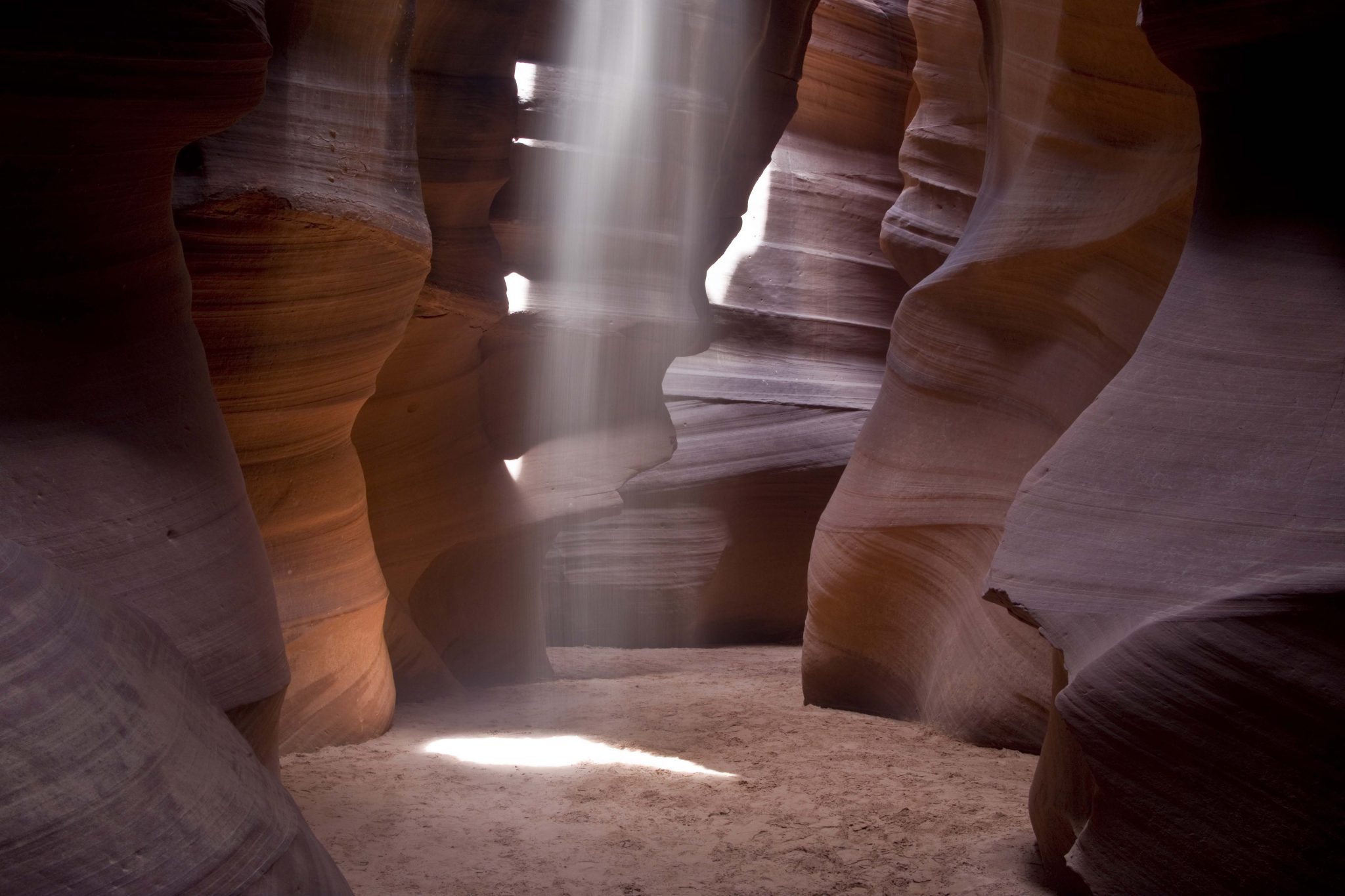
Antelope Canyon, a geological wonder nestled within the heart of the American Southwest, is one of the world’s most captivating natural wonders. This breathtaking slot canyon, renowned for its swirling sandstone walls and enchanting interplay of light and shadow, has drawn photographers, adventurers, and nature enthusiasts from around the globe. In this article, we will delve into the fascinating history of Antelope Canyon, its formation, its location, and the mesmerizing light beams that make it an iconic destination.
How was Antelope Canyon Formed?
Antelope Canyon’s origins trace back millions of years to the relentless forces of nature. The slot canyon was sculpted by the power of wind and water, specifically flash floods that periodically surge through the region. Located within the Navajo Nation near Page, Arizona, Antelope Canyon is composed of two distinct sections: Upper Antelope Canyon (known as “The Crack”) and Lower Antelope Canyon (referred to as “The Corkscrew”).
Over millennia, rushing waters carried abrasive sand and sediment through the narrow openings at the canyon’s surface, gradually carving and smoothing the sinuous passageways. The remarkable result is a winding labyrinth of narrow corridors with graceful, undulating walls that appear almost surreal in their fluidity.
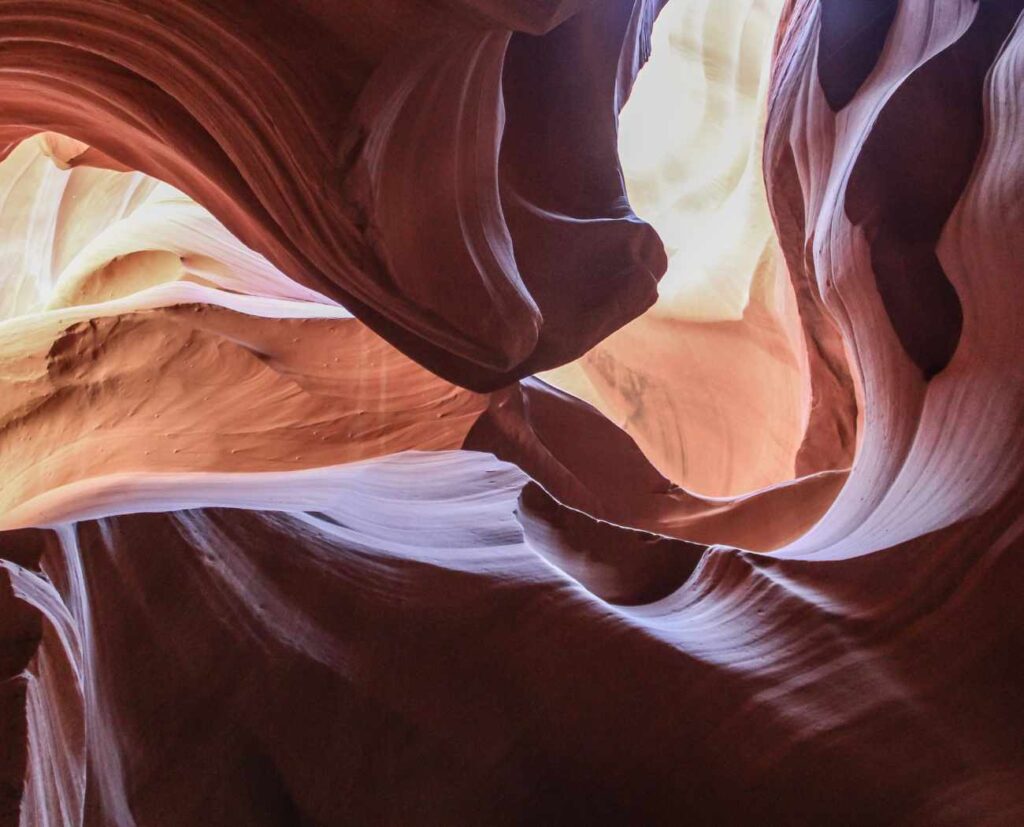
Geological Marvel
The primary reason behind the visual splendor of Antelope Canyon is the unique nature of its sandstone walls. The Navajo sandstone, formed during the Jurassic period, consists of fine grains that have been compacted over eons. Erosion and weathering have expertly sculpted this rock into the canyon’s distinctive shapes and textures. The wavy, curving walls are adorned with fascinating patterns, ranging from gentle ripples to dramatic spirals, and are often likened to abstract artistry etched by nature itself.
Where is Antelope Canyon Located?
Antelope Canyon is conveniently located near Page, Arizona, making it easily accessible to visitors from around the world. The slot canyon is situated within the LeChee Chapter of the Navajo Nation, approximately 140 miles northeast of the Grand Canyon. Page itself serves as a gateway to this natural wonder, offering various accommodations, tour operators, and amenities to cater to the influx of travelers.
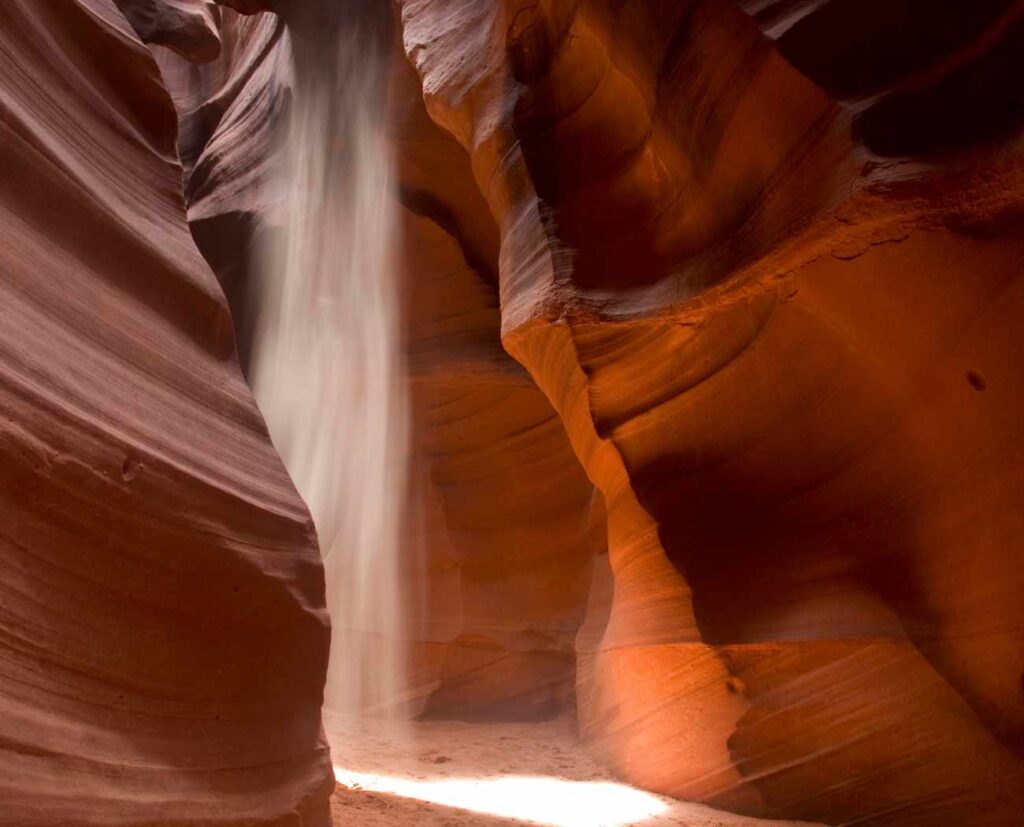
Upper Antelope Canyon vs. Lower Antelope Canyon
Both Upper and Lower Antelope Canyons offer distinctive experiences. Upper Antelope Canyon is renowned for its beams of sunlight that filter down through narrow openings in the canyon’s roof, creating a breathtaking display of light and shadow. These beams, often referred to as “shafts of light,” occur primarily during the summer months when the sun is high in the sky. The phenomenon is celebrated by photographers who flock to capture the ethereal beauty of the dancing light within the canyon’s depths.
Lower Antelope Canyon, on the other hand, is characterized by a more intimate and adventurous exploration. Its unique spiraling formations and ladder-assisted descent into the canyon make it a favorite among hikers and adventurers. Though it may not boast the same dramatic light beams as its counterpart, it offers stunning photo opportunities and an up-close encounter with the remarkable geology of the region.
Photographing the Light Beams in Upper Antelope Canyon
The legendary light beams that pierce through the openings of Upper Antelope Canyon are a major draw for photographers. These beams are created when sunlight enters the narrow openings in the canyon’s roof and is then scattered by particles in the air, resulting in breathtaking rays of light that seem to dance upon the canyon floor. The beams’ intensity and appearance change throughout the day, presenting photographers with a constantly shifting canvas of natural art.
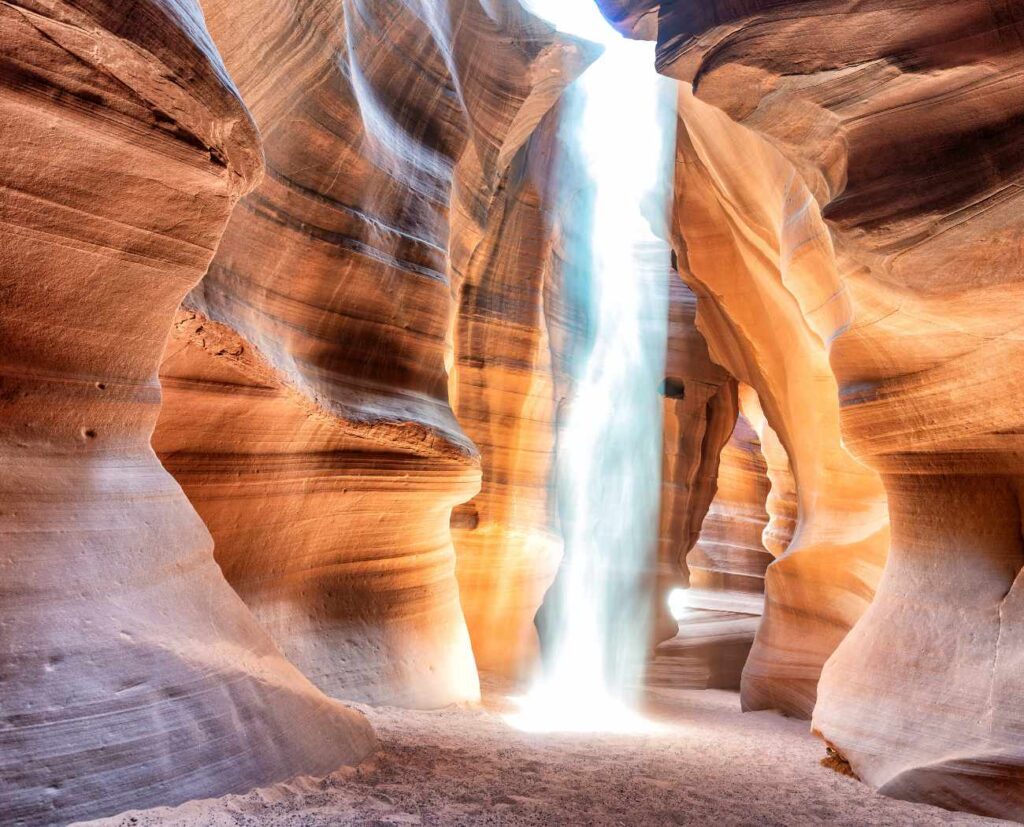
Guided Photo Tours of Upper Antelope Canyon
Photography enthusiasts often time their visits to coincide with the optimal lighting conditions, typically during the mid-morning and early afternoon hours when the sun is at its zenith. Capturing the interplay of light and shadow in Antelope Canyon has become an art form, and the resulting images are nothing short of mesmerizing.
To capture the elusive and enchanting light beams in all their glory at Upper Antelope Canyon, signing up for a specialized photo tour is essential. While these tours may come at a higher cost than standard ones, the experience is well worth it for avid photographers and those seeking to create stunning visual memories.
The Advantages of an Antelope Canyon Photo Tour
Prime Positioning: Photo tours prioritize positioning participants in the best spots to witness and photograph the light beams. You’ll be guided to optimal vantage points within the canyon where the beams are most dramatic.
Expert Guidance: The guides leading these tours are seasoned professionals who understand the nuances of capturing the perfect shot. They can offer photography tips and techniques, ensuring you make the most of your visit.
Sand Throwing: One of the unique features of photo tours is the “sand throwing” technique. Guides have a crew dedicated to throwing fine sand into the air, which adds a magical element to the light beams, making them more visible and vibrant in your photos.
Timed Opportunities: Time is of the essence when it comes to photographing the light beams. On a photo tour, guides are well-versed in the precise timing of when the beams are at their peak. You’ll have only a few seconds to capture this breathtaking phenomenon, and the guides ensure you’re ready to seize the moment.
Smaller Groups: Photo tours typically have smaller group sizes compared to standard tours. This allows for a more intimate and less crowded experience, which is especially advantageous for photographers who want unobstructed views.
Enhanced Experience: In addition to focusing on photography, photo tours often provide a more comprehensive experience, delving into the cultural and geological aspects of the canyon. Guides can share the history and significance of the canyon, adding depth to your visit.
While the cost of a photo tour may be higher, the opportunity to capture the stunning interplay of light and shadow within the canyon is a truly unique and memorable experience. If you’re passionate about photography or simply want to ensure you don’t miss this awe-inspiring natural spectacle, a photo tour of Upper Antelope Canyon is an investment in creating lasting visual memories that you’ll treasure for a lifetime.
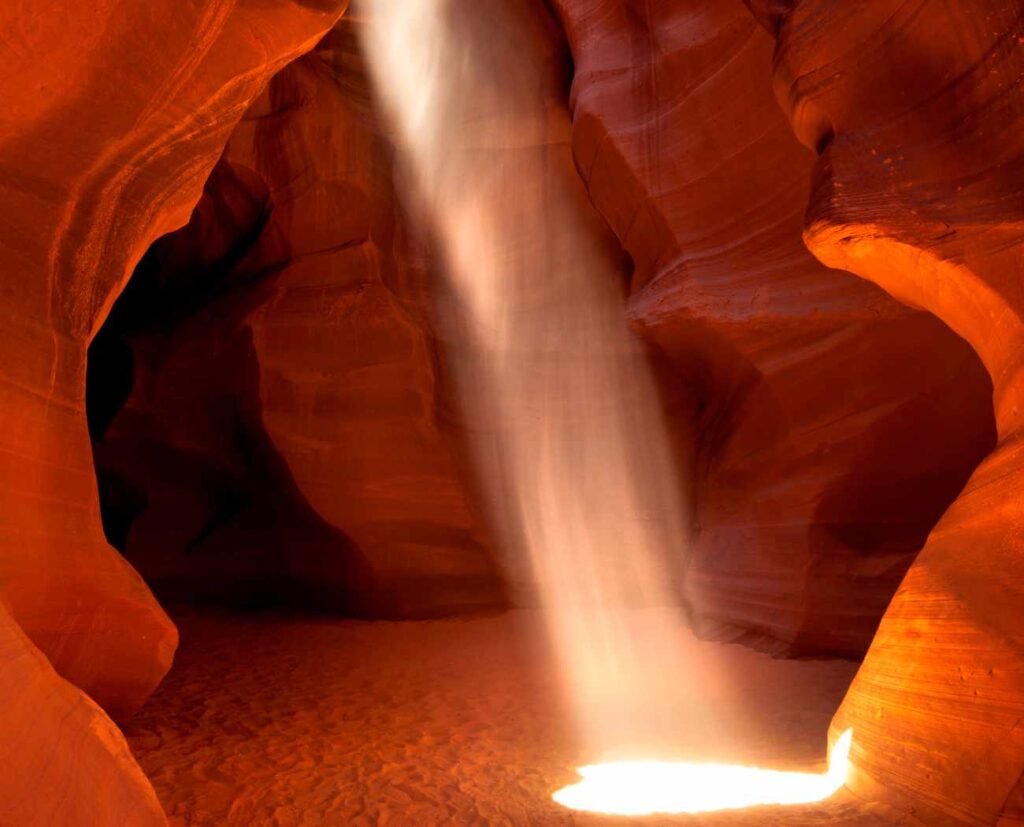
Antelope Canyon is a Bucket List Experience
Antelope Canyon is not merely a geological marvel; it is an example of the Earth’s creative forces and the timeless beauty of nature. Its narrow passages, sculpted sandstone walls, and enchanting light beams have made it a global destination for travelers and photographers seeking to capture its ethereal beauty. Whether you choose to explore Upper or Lower Antelope Canyon, the experience is guaranteed to leave an indelible mark on your memory. As you stand within the cool, shaded embrace of these magnificent slot canyons, you will witness a breathtaking dance of light and shadow that speaks to the enduring wonder of our planet’s natural wonders.
Visiting Antelope Canyon
Upper Antelope Canyon and Lower Antelope Canyon are accessible by Navajo guided tour only, adding an authentic cultural dimension to the visitor’s experience.
Antelope Canyon’s unique accessibility through guided tours serves as a crucial safety measure, especially during the monsoon season. Flash floods in the region can pose significant risks, and these floods don’t necessarily require rain to fall directly on or near the canyon slots. Even rainfall dozens of miles away can funnel into the narrow passageways with little warning, turning a tranquil visit into a potentially perilous situation.
The expertise of Navajo guides is invaluable in ensuring the safety of visitors. They possess an intimate knowledge of the local weather patterns, the signs of impending floods, and the ability to swiftly respond to changing conditions. This is essential for safeguarding the well-being of those exploring the canyon’s captivating beauty.
Related Articles:
Chasing the Light – A photographer’s experience during a Guided Photo Tour of Upper Antelope Canyon. Photos of the light beams are included in this article.
Page, AZ – Information about Page, Arizona.
Hiking Canyon X – Canyon X and the more formidable Cardiac Canyon are located on the same cracked tract of Navajo land near Page, Arizona.